The Strange Room in Varanasi
My flight was set to land in Delhi on a Sunday morning. The Holi Festival photo tour group? Not until Monday night.
That free time made me restless. Staying quietly in Delhi — a city I had already visited — didn’t sound appealing at all. Instead, I started wondering: would it be possible to visit Varanasi?
Runa, the photographer leading the workshop, had lived in India for six months. So I asked her opinion. Her answer came immediately: “Go!” She even gave me the contact information of a guide and the place where she had stayed.
I bought the idea without hesitation and boarded the first flight to Varanasi after arriving in Delhi. I was so excited that I couldn’t feel any trace of tiredness, even after a thirty-hour flight from Brazil.
At the airport in Varanasi, my guide was already waiting for me. We took a taxi toward the hotel, but it dropped us off at the corner of a narrow street. From there, we continued on foot.
Looking around, everything seemed like a modest residential neighborhood. Still, I kept walking, expecting that at any moment the hotel would finally appear in front of me.
Suddenly, he stopped and said: “Here we are.”
I looked around. All I could see were houses.
Where?
He pointed to the building right in front of us.
Still confused, I stepped inside. A man said he had been expecting me. He confirmed I’d be staying just one night, and after a few questions, he invited me to climb the stairs to my room.
Arriving on the first floor, the staircase ended directly inside a room with mattresses spread across the floor, where a family was resting and chatting. There was no door separating the stairs from their space. They didn’t seem surprised at all by my presence, while I was in shock, realizing I was literally walking through someone’s bedroom.
The man, however, kept climbing, so I simply said “Namaste” to the family and followed him upstairs.
The next floor was similar, but instead of a family, there was a couple. Again, I said “Namaste” and kept going.
Finally, on the top floor, he stopped and opened a door. After helping to put my luggage inside, he pointed to a small door on the other side of the room and said: “Whatever you do, don’t open it.” Then, before leaving, he added that I should keep the front door locked and the key with me.
I collapsed on the bed (yes, an actual bed!), so relieved that I wasn’t sharing a room and floor mattress — especially not one where people seemed to walk through freely — that I didn’t even stop to think about the strange warnings he was casually throwing out there..
I had done everything in such a hurry that I hadn’t even bothered to check the place before!
Back to India, All Senses Awake
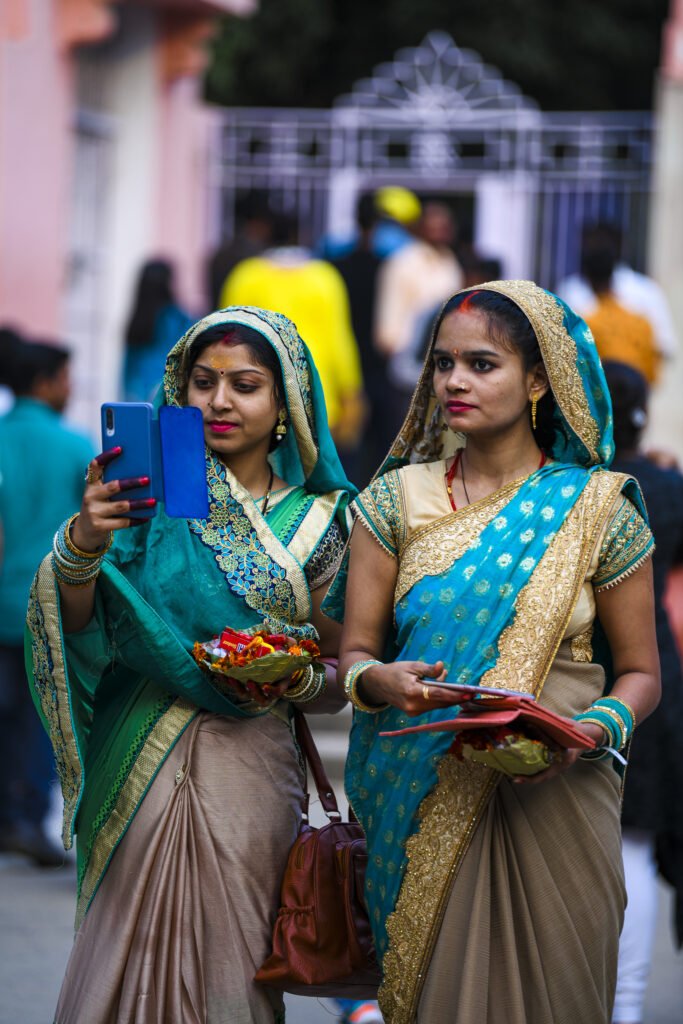
Even if I had been completely exhausted, that bedroom wouldn’t have invited an afternoon of relaxation. Instead, I just took a shower and left a second later. Time was short, and I was counting every second there.
My first time in India was in 2017, and I was truly happy to see again the colorful saris on the streets, the distinctive accent, the smell of spices from food stalls, and even the chaotic, noisy traffic. Everything felt familiar — and I had missed it.
There was one thing new, though: I had already seen the modest side of some Indian cities, but Varanasi felt even more raw — life unfolding right in front of me, without filters.
Vikkiy, my guide, was an energetic young man, and the moment I said I was ready to start, he jumped into a tuk-tuk.No surprise when we stopped in front of a temple. If temples are part of any trip to India, imagine in a city considered the most sacred in Hinduism.
When the Sun Sets, the Ganges Lights Up
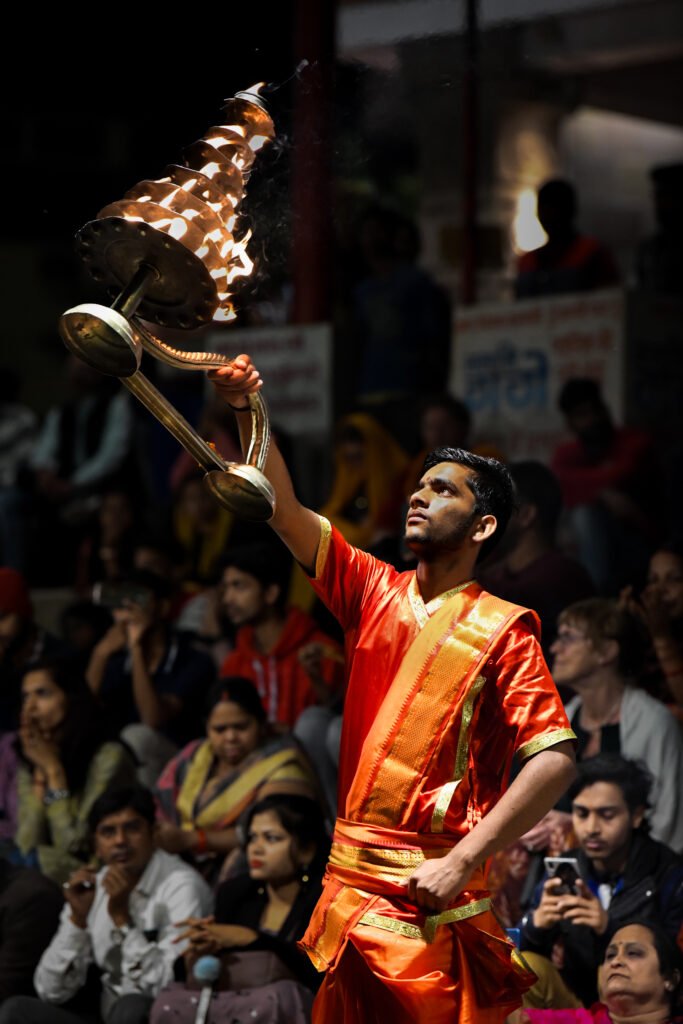
However, my attention was completely drawn to the ceremony on the banks of the Ganges River at the end of the day.
When the sun was almost gone, the famous Ganga Aarti began. Thousands of people gathered on the ghats or boarded boats to witness this spectacle of faith and devotion.
Did you know?
A ghat is a series of stone steps leading down to a river, very common in India. In Varanasi, there are more than 80 of them along the Ganges. Some are used for daily life, like bathing or washing clothes, while others are sacred spaces for rituals, ceremonies, and even cremations.
The Ganges is sacred to Hindus, as it is considered the personification of Goddess Ganga — one of the most venerated deities in Hinduism, a symbol of purity, renewal, and liberation. During the ceremony, the river itself transforms into a dazzling open-air temple.
The priests, wearing red and yellow robes, stood on individual platforms facing the river while performing the mesmerizing spiritual choreography with fire, incense, and bells, carried by the sound of chants and mantras.
The ceremony is deeply meaningful for Hindus, and I could see eyes filled with emotion. Some had made enormous efforts just to be in Varanasi for this moment.
After the ceremony, I couldn’t resist the urge to approach the sacred waters. I like this idea of a natural element being worshiped as a deity. The Incas in Peru, for example, considered their mountains as deities as well.
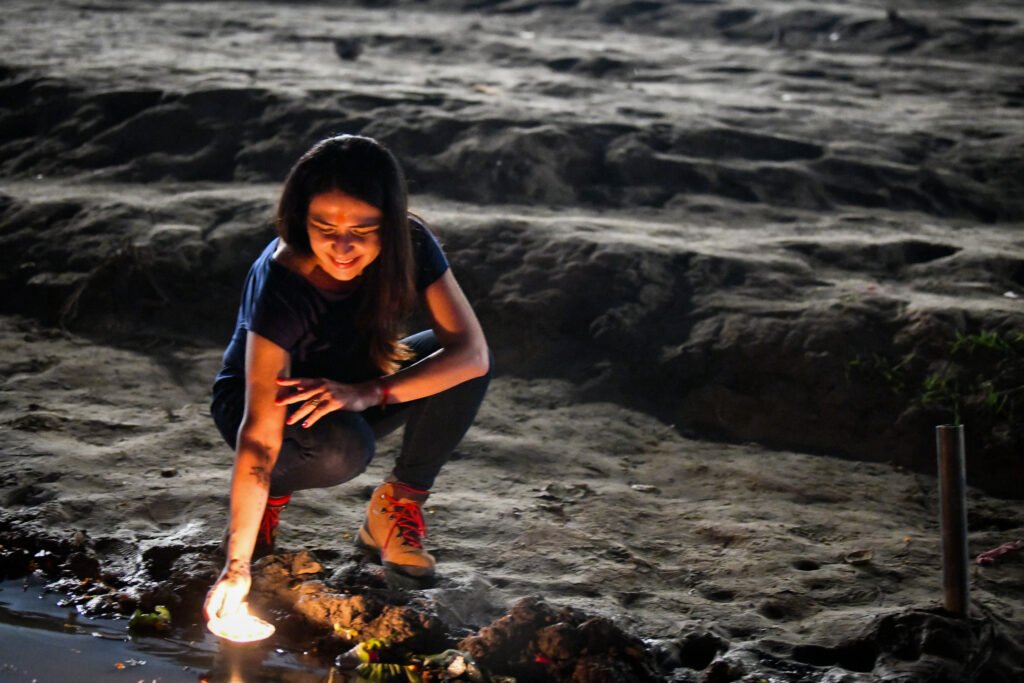
Now, however, I had to face that strange bedroom again. So I headed back to the “hotel” — this time, fully prepared to trespass through other people’s rooms.
Drifting Through the Sacred River
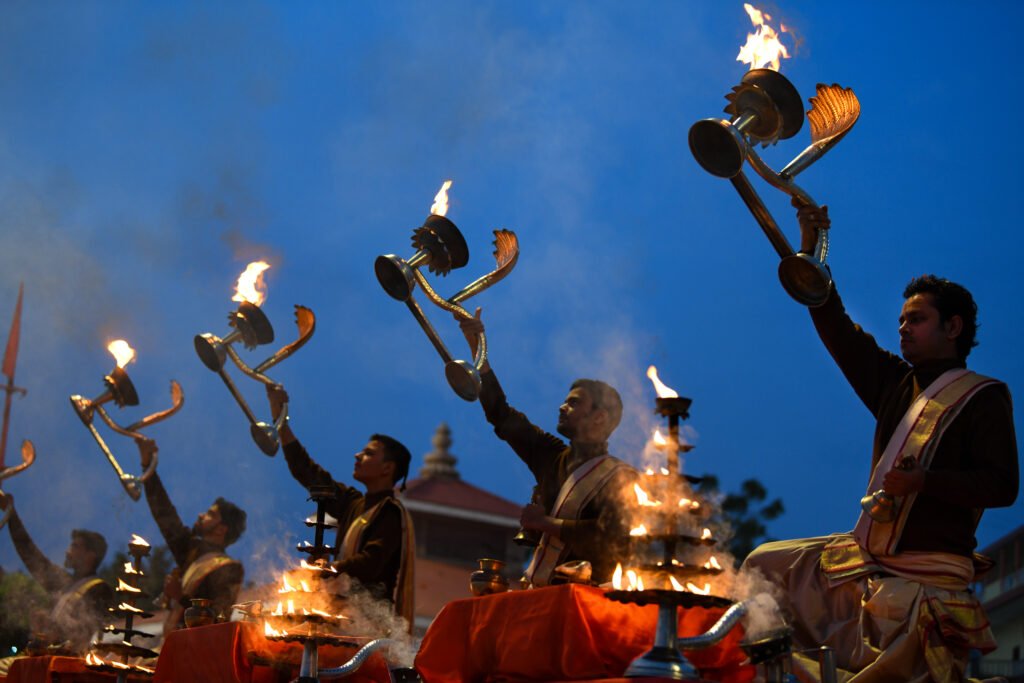
Before sunrise, Vikkiy and I were back at the ghat — this time for the Subah-e-Banaras ceremony. Like the Ganga Aarti, it also takes place every day.
In the early morning, the atmosphere was more quiet and contemplative, yet still filled with chants, Indian classical music, yoga, offerings, and the sun salutation.
As soon as the sun rose, the ceremony ended and we boarded a small boat. The boatman rowed slowly along the Ganges while I absorbed the extraordinary landscape unfolding before me. I had never seen anything remotely like it. It was the most unique riverbank I had ever laid eyes on.
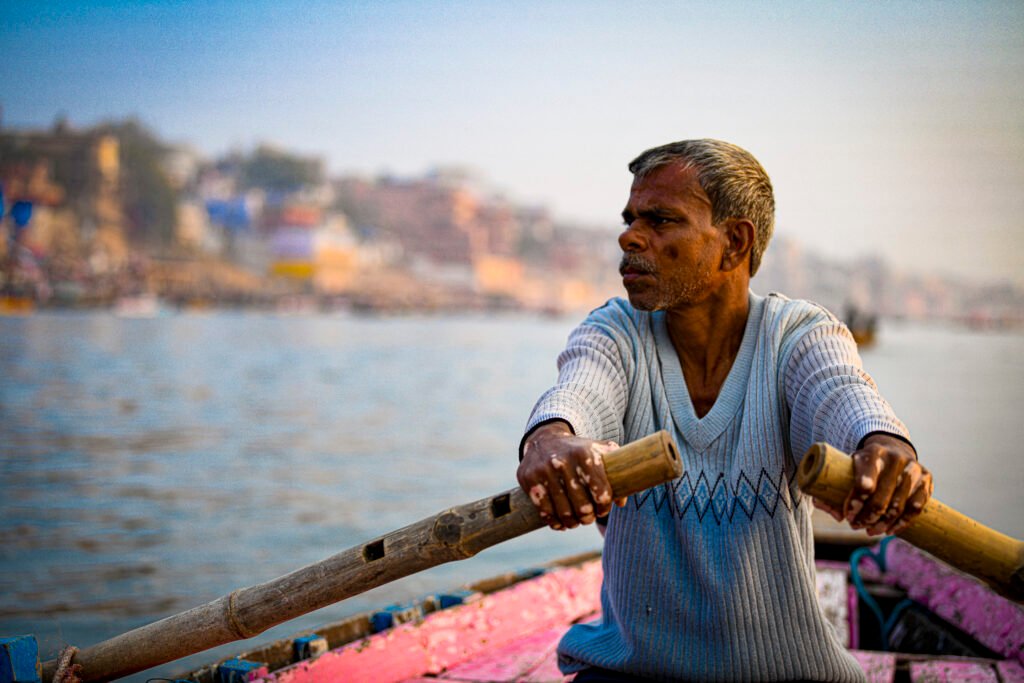
Stretching as far as I could see was a continuous line of earthy-toned constructions, their details gradually revealed as our boat moved along the river: from simple stacked houses to imposing palaces.
Even though it was early morning, the ghats were already full of life — people praying, washing clothes, and, of course, bathing in the sacred river.
There were also many boats, and with all that intense traffic, the river didn’t look quite so sacred anymore.
For me, this boat ride was the highlight of Varanasi. And I have the strong feeling that one day I’ll be back to do it again.
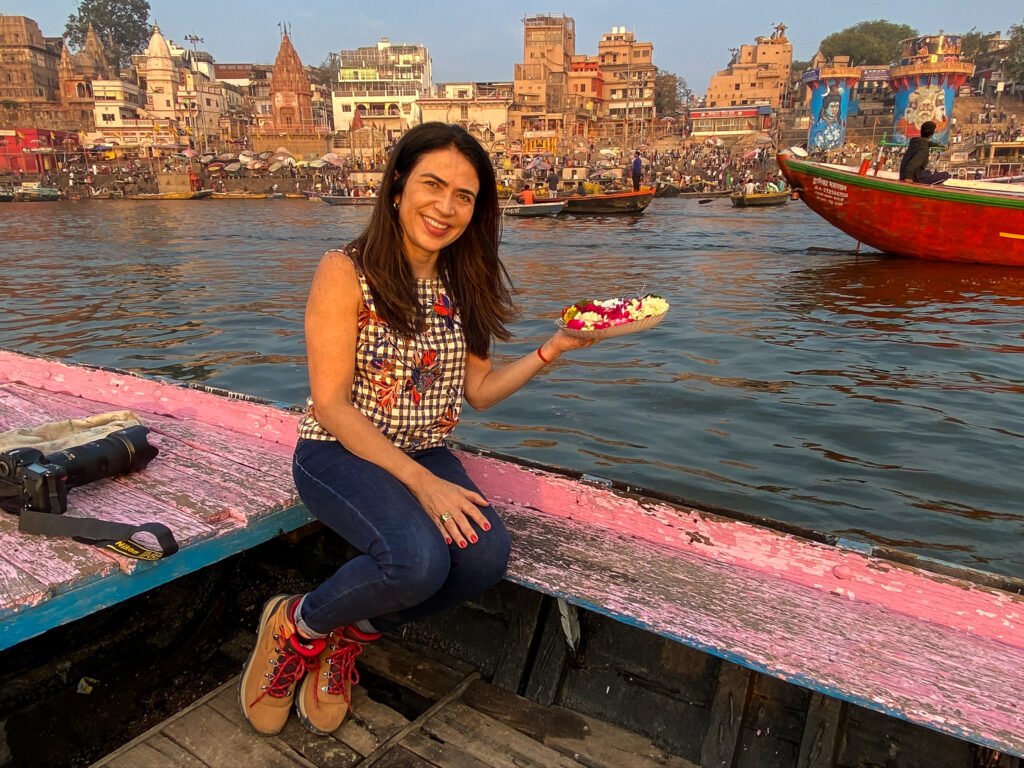
Where Life Meets Death on the Ganges
At a certain point, our boat slowly approached the shore. I fixed my gaze on the ghat ahead and immediately noticed it didn’t have the same earthy tones as the others. This one carried shades of grey as well.
The buildings didn’t look the same either. The whole place seemed like a war zone recently bombed. The river here was darker, heavy with debris, with trash floating near the steps. And to complete the scene, thick smoke drifted in the air.
Desolation — that was the word that came to mind.
By then, I already knew what it was: one of the famous cremations ghats.
Did you know?
For Hindus, being cremated in Varanasi — especially at sacred sites like Manikarnika Ghat — is believed to grant moksha, liberation from the endless cycle of rebirth. Families often save money for a lifetime to ensure this final rite, and when they live far away, sometimes only one relative travels with the body to perform the cremation on the banks of the Ganges.
We walked toward it, and even before reaching the steps, the distinctive odor reached us from the bridge. Instinctively, I looked for something to cover my face.
A small group of people soon arrived from the other side. They laid a body on an improvised platform, and the ceremony began.
My thoughts were scattered, like a word cloud: cultural difference, rawness, cremation, body, death, smoke, fire.
As soon as one cremation ended, another body was brought in — one after the other, like an endless production line.
Only after witnessing the cremations did another image force its way back into my mind: a woman, just a few meters back, brushing her teeth in the river. That contrast wouldn’t leave me for a long time.
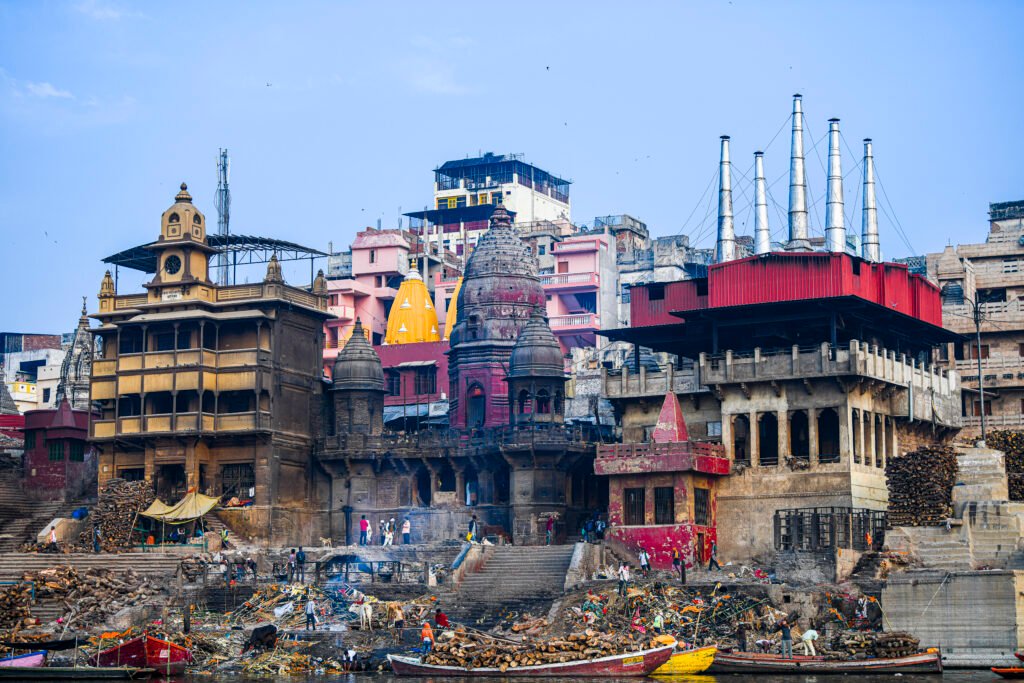
While I was still trying to process what I had seen, we stepped into a street behind the ghat and started to walk aimlessly.
The sunlight seemed unable to find its way into that maze of narrow alleys — everything looked dark, heavy, almost drained of color.
There were all kinds of shops and vendors, products spread directly on the street. People moved through their daily routines while small groups carrying bodies rushed past us. And every now and then, a cow wandered slowly through the middle of the chaos — completely undisturbed.
From Smoke to Colors
Eventually, we ended up at another ghat that had caught my attention earlier from the boat. This one was more colorful than the others, and a substantial crowd had gathered there.
Vikkiy explained where we were, but all I caught was the word ghat. The other name was almost unpronounceable: Dashashwamedh Ghat.
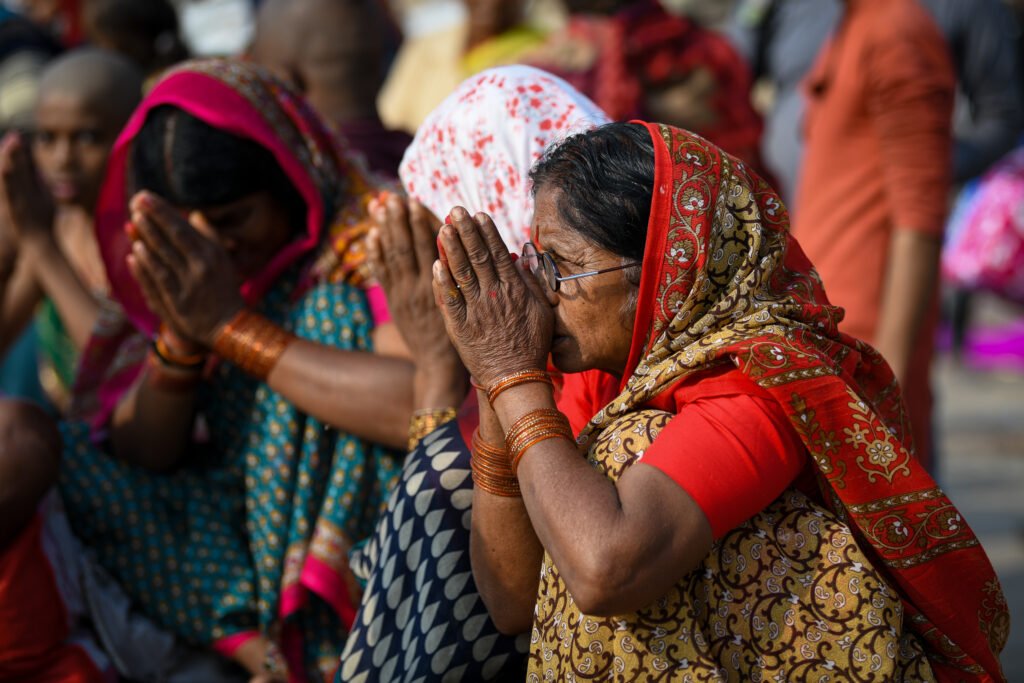
Did you know?
The Dashashwamedh Ghat is the most famous and vibrant ghat in Varanasi. Its name means “the place of ten horse sacrifices” — according to legend, Lord Brahma performed an ancient ritual here, offering ten horses.
We stayed there for a while, and I kept looking at everyone and everything. I saw individuals and groups praying. Some were seated on the stairs, while others preferred a closer approach — asking for blessings directly from Goddess Ganga, inside the river.
And then came the moment when Vikkiy told me my time was coming to an end. I couldn’t believe it. So fast!
Varanasi is truly an intense and overwhelming city. I wanted more days. I still do. I didn’t have time to explore the entire city, and I felt I needed more time in the ghats.
But as a short stop before the Holi Festival, that would have to do. Now it was time to head toward the colors of the festival.
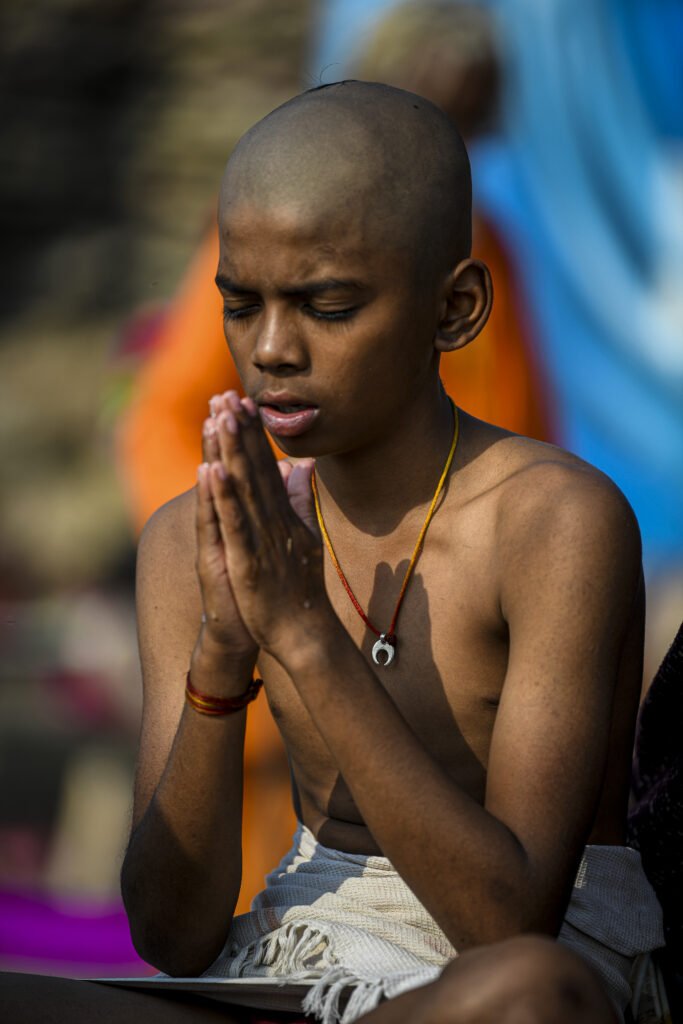
Loved this post, it really left me wanting more. Can’t wait for what is coming next!
I love reading your comments! Thank you so much — I’m doing my best to keep up with such a voracious reader!